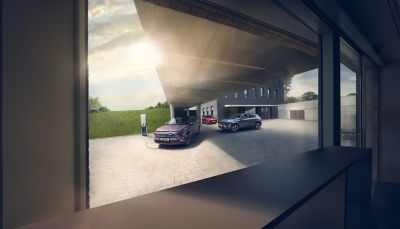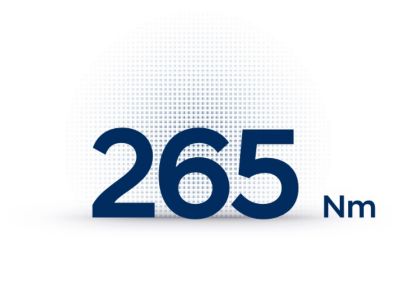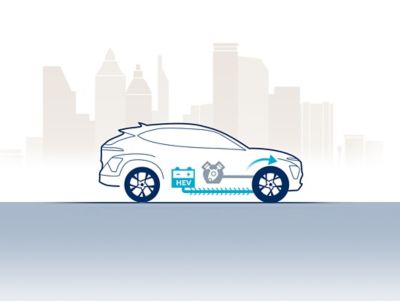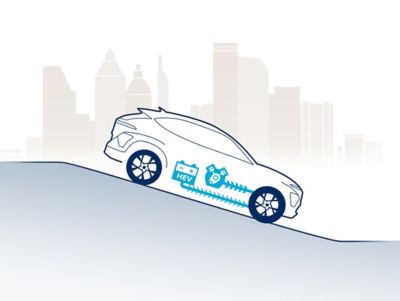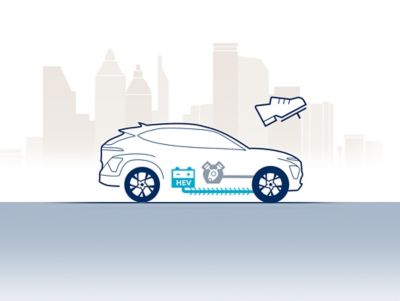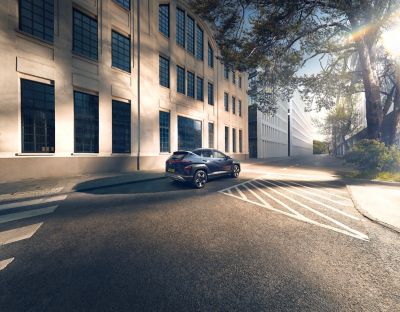Combining petrol power with electric efficiency
Developed to reduce tailpipe emissions without compromising on driving experience.
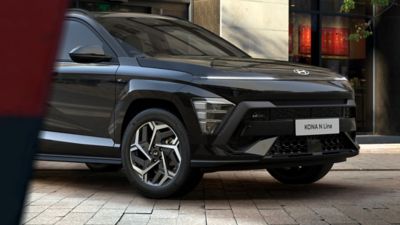
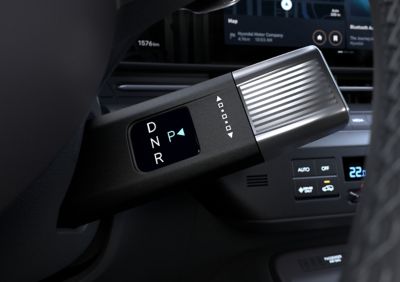
Hybrid
Electrifying efficiency: the KONA Hybrid
The Hyundai KONA Hybrid uses electric power to help you go further, all without you having to charge a battery or change your driving habits. Taking fuel efficiency to the next level, it’s equipped with both a petrol engine and a battery-powered electric motor. It’s a full-parallel hybrid drive system with regenerative braking that charges the battery so you don’t have to.
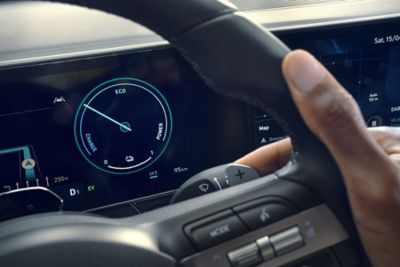
Energy flow – how the KONA Hybrid works
Depending on the driving situation, the Hyundai KONA Hybrid switches seamlessly between its petrol engine and electric motor, sometimes using both. The regenerative braking system charges the battery by using the electric motor to slow the car. The energy stored in the battery then powers the electric motor to help in acceleration, uphill driving and low-speed driving. This complex energy flow is illustrated in these animations.
